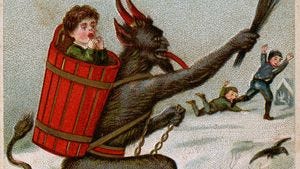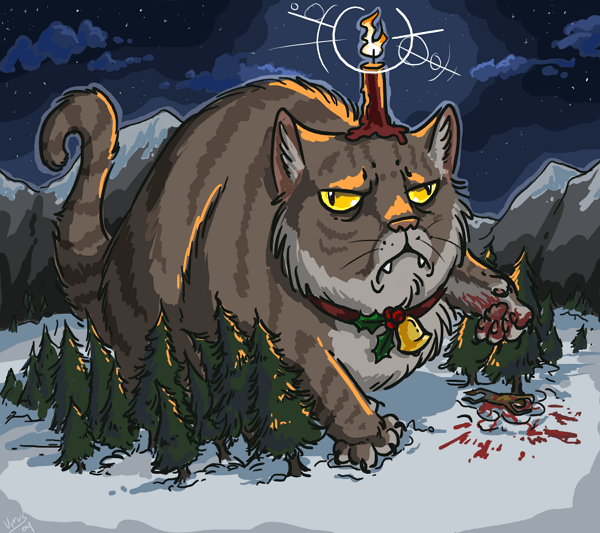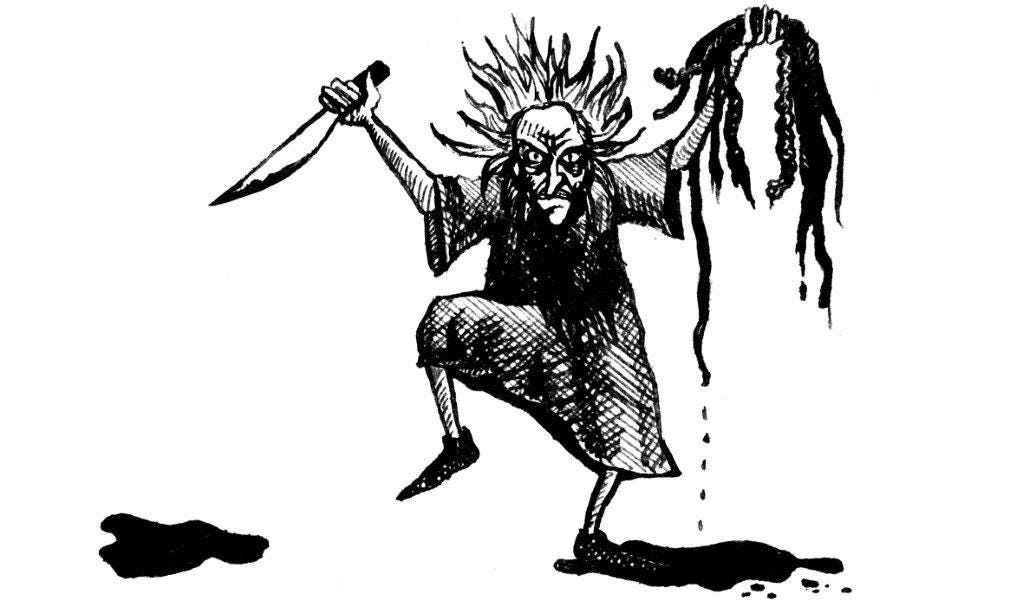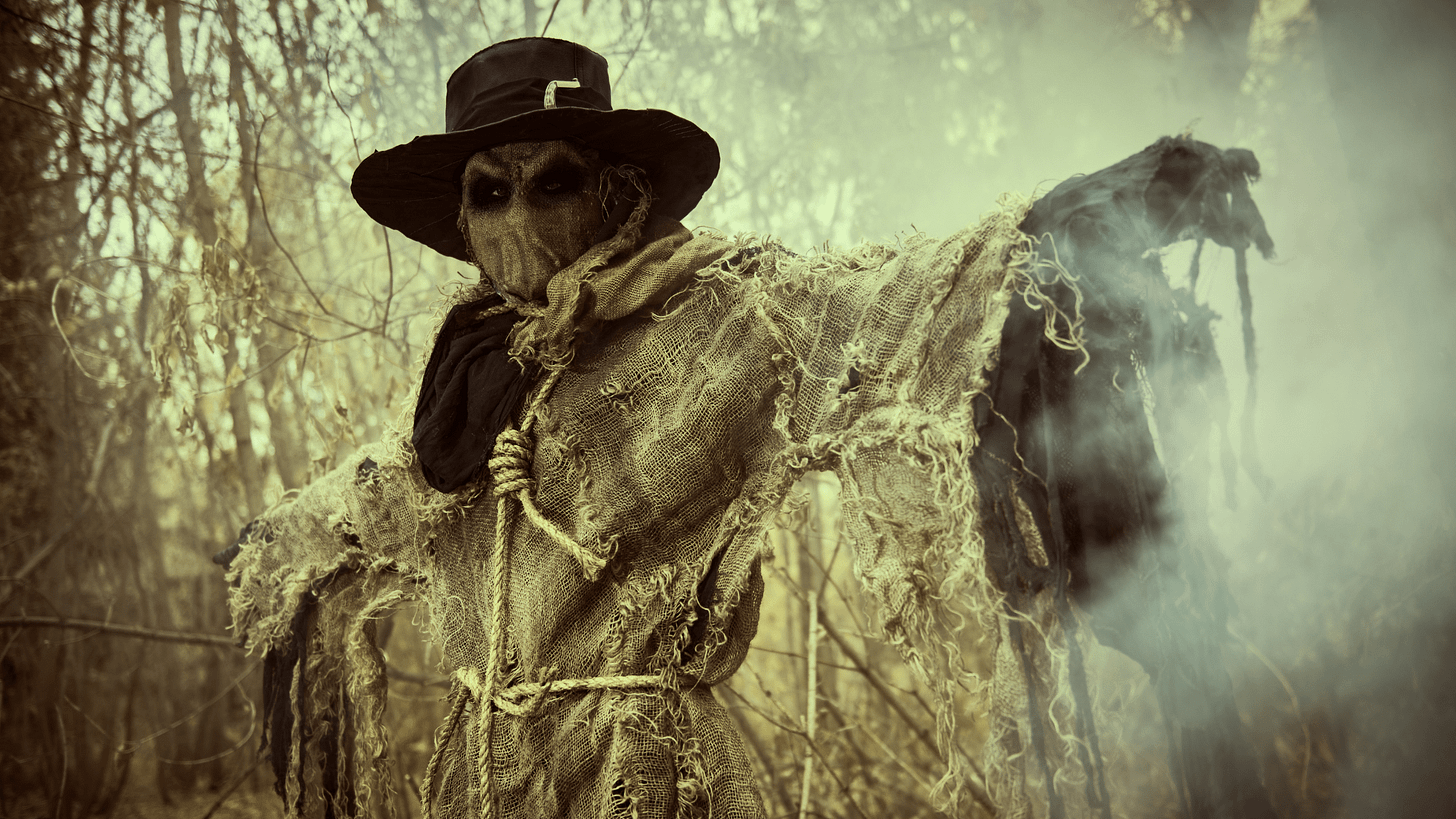8 Holiday Legends from Hell
During the holiday season, people around the world celebrate a variety of holidays, like St. Nicholas Day, New Year's Day, and Epiphany, as well as Christmas. These holidays have a long history, and many of the traditions and customs we observe today have roots in ancient pagan celebrations. Some of these traditions encourage children to be good by promising them rewards, like Christmas gifts, if they behave. But some traditions also warn kids that if they're not good, they may be punished by scary or evil characters, like monsters or goblins. Even though these traditions might seem a little scary, they're all part of the fun and excitement of the holiday season!
Krampus
One of these traditions is Krampus Night, which is celebrated on December 5 in some parts of Europe, like Austria. On Krampus Night, people dress up as a character called Krampus, who looks like a devil or a wild beast, depending on where you are. Krampus is sort of like the opposite of Santa Claus - while Santa rewards good behavior with presents, Krampus punishes bad behavior by scaring or even hitting people. In some places, there are public celebrations on Krampus Night where people dressed as Krampus walk through the streets, looking for people to playfully "beat up." In recent years, this tradition has spread beyond Europe, and now some cities in America also have their own Krampus Nights.
Jólakötturinn
In Iceland, there is a tradition called Jólakötturinn, or the Yule Cat, that is tied to Christmas. According to this tradition, children who finish all their work on time and are good throughout the year will receive new clothes for Christmas as a reward. But if they are lazy or not good, they might not get any new clothes. To encourage children to work hard and be good, Icelandic parents tell a story about the Yule Cat, who is a very big and scary cat that eats children who don't have new clothes for Christmas. This story is meant to remind children to do their chores and be good, so they can get new clothes and be protected from the Yule Cat. There is even a poem about the Yule Cat that suggests that children should help out the needy, so everyone can have new clothes and be protected from the Yule Cat.
Frau Perchta
In Germany and Austria, there is a tradition about a witch named Frau Perchta who appears during the 12 days of Christmas (from December 25 to January 6). Frau Perchta is known for giving out both rewards and punishments to people, depending on whether they have been good or bad. One of her punishments is particularly gruesome: She will rip out a person's internal organs and replace them with garbage if they have been very sinful. Frau Perchta is sometimes featured in Christmas processions in Austria, similar to Krampus.
It is thought that Frau Perchta's story is based on an ancient Alpine goddess of nature, who spends most of the year looking after the forest and only deals with humans during Christmas. In modern celebrations, Frau Perchta or a similar character may appear in processions during Fastnacht, an Alpine festival just before the season of Lent. There may also be a connection between Frau Perchta and an Italian witch named La Befana, who is also known for giving out gifts and punishments during the holiday season. However, La Befana is not really a monster - she is just an ugly but kind witch.
Belsnickel
Belsnickel is a character from southwestern German folklore who is known for visiting children before Christmas. He is usually depicted as wearing tattered and raggedy clothing and fur, and he carries a switch and candy. The switch is used to make noise and warn children to be good before Christmas, and all the children get candy if they are polite. Belsnickel's name is a combination of the German words "belzen," which means "to wallop," and "nickel" for St. Nicholas.
Belsnickel is similar to other characters from German folklore, like Knecht Ruprecht and Ru Klaas, who also punish bad children and leave St. Nicholas to reward good children with gifts. Belsnickel is also sometimes seen in Pennsylvania Dutch customs in the United States.
Hans Trapp
Hans Trapp is a character from the Alsace and Lorraine regions of France who is known for punishing bad children during the holiday season. According to legend, Hans Trapp was a real man who was very wealthy and greedy, and he worshiped Satan. Because of this, he was kicked out of the Catholic Church and forced to live in the forest. While he was living in the forest, Hans Trapp disguised himself as a scarecrow and preyed upon children, trying to capture and eat them. However, he was eventually struck by lightning and killed, which was seen as a punishment from God for his evil actions. Even though he is no longer alive, Hans Trapp is still remembered today, and some people believe that he visits young children before Christmas, dressed as a scarecrow, to scare them into being good.
Père Fouettard
In France, there is a legend about a character called Père Fouettard, which means "Father Whipper." According to the legend, Père Fouettard was once an evil butcher who liked to eat children. One day, he (or his wife) lured three boys into his butcher shop and killed, chopped, and salted them. But St. Nicholas, a very kind and holy man, came to the rescue and brought the boys back to life. He also took custody of the butcher, who became Père Fouettard, St. Nicholas's servant. Now, Père Fouettard's job is to punish bad children on St. Nicholas Day, which is a holiday that is celebrated in some parts of Europe.
The Yule Lads
In Iceland, there is a tradition about 13 trolls called the Jólasveinar, or Yule Lads. Each of these trolls has a unique name and personality. In the past, the Jólasveinar were known for causing trouble and stealing things around Christmastime, and they were used to scare children into behaving, similar to the Yule Cat. However, in the 20th century, a new tradition started in which a kind Norwegian figure called Julenisse (Santa Claus) brought gifts to good children. Over time, these two traditions became mixed together, and the Jólasveinar became more benevolent, leaving gifts for good children who left out their shoes.
Grýla
In Icelandic tradition, the Jólasveinar, or Yule Lads, are 13 trolls who are known for causing mischief and trouble around Christmastime. All of the Yule Lads are the children of Grýla, who is a very scary ogress. According to legend, Grýla kidnaps, cooks, and eats children who don't obey their parents. Grýla has been a part of Icelandic folklore for a long time, but she only became associated with Christmas in the 17th century, when she was made the mother of the Yule Lads. Grýla had three different husbands and 72 children, who were known for causing all sorts of trouble, from harmless mischief to murder. In addition to the Yule Lads, Grýla also lives with the Yule Cat in her home. Grýla is such a troublemaker that she was even blamed for causing a volcanic eruption in Iceland in 2010!






